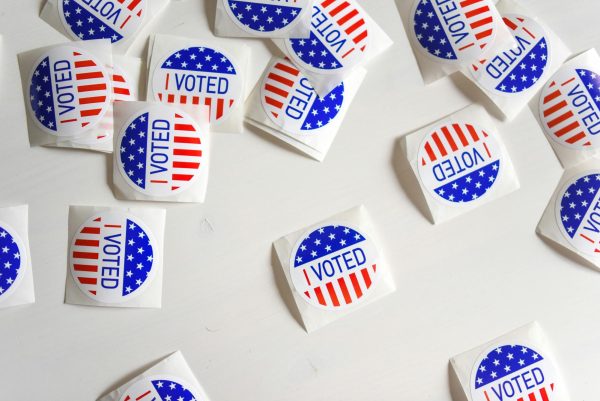College Admissions Process is a Broken System
After years of observation, conversations, and now my own perspective as a graduating senior, I believe the college
admissions process is deceptively precarious. What was once a solid way to lead students to fulfilling their dreams has now become a draining and unpredictable system, warping the perspectives of graduating students. As the number of applicants increase exponentially year after year and the thought of getting into college becomes more insecure, there is an obvious problem with this nationwide system.
According to The New York Times, the number of college applications has increased by more than 30 percent over the past three years. To put this into perspective, this year about 1.56 million more applications were sent compared to the class of 2020, despite the class sizes being around the same size. As a result, getting into college has become increasingly more difficult as each year it seems that this year applicants have “broken records” and admissions officers “have never seen such high stats,” according to a letters from colleges this year. The effect of this: qualified students who would have been accepted into their top choice a few years ago are now being rejected from more than just their “target” schools.
Here’s why:
Technology
If you’re a senior applying to college, the Common App may very well become your best friend; it has made the process of applying to colleges far easier than ever before. More than 1,000 colleges and universities use Common App for students to submit their applications. It was made for convenience.
While this in theory sounds great, it has exponentially inflated the acceptance rates of all colleges and universities nationwide. Students are now sending more applications than ever before, simply because of the convenience of Common App. According to Academic Influence, just 9 percent of students applied to seven or more schools in 1990.
Now, this number has shot up to 53 percent. Many students who apply to more than 10 schools don’t even want to attend all of them.
This takes the spot from other students who do want to attend. Colleges know this. To combat this phenomenon, colleges have implemented “yield protection” which rejects students who are seemingly “over- qualified” from taking a spot from someone else who will actually attend. Therein lies problems with this system as well, as students who do actually want to attend are not granted admission.
To solve this, students should be limited to the amount of schools they can apply to. By applying to 10 schools or less, there is more responsibility put on the students to choose colleges that are best for them. Not only should the amount of schools students apply to be limited, but all colleges should implement a “Why Us?” essay as this again challenges students to ponder, “Is this really the right fit for me?”
Warped Mindset
I will admit, I have fallen victim to a warped mindset as well. College admissions is notoriously known as a humbling experience. Yet, year after year, students underestimate the selectivity of college admissions, especially among those prestigious institutions. There is no clear answer as to what exactly colleges look for in students, but my advice: ignore the selectivity.
Selectivity is hard to ignore as the pressure of your peers applying to a grandiose number of elite schools makes you believe that you have to, too. The toxic mentality that if you don’t attend a “Top 10 School” means you
will never be successful is completely wrong.
Resources and ranking sites have already begun to discredit admission rates because they are nothing more than a number of selectivity. Sure, there is no doubt that the history within those acceptance rates helped solidify high social and economic status among people, but not everyone who received a Harvard education becomes a millionaire.
When analyzing a school, keep in mind what opportunities and traits you care about: Does it have diversity? Ability to create connections easily with professors? The right community for you? “Colleges and universities who choose to elevate accessibility and opportunity for applicants will inherently have far higher admission rates than those who use their large endowments to aggressively recruit exponentially more applicants than they plan to accept,” according to Academic Influence. The nation’s most selective schools are in a race to further magnify their minuscule rates of admission for the result of bragging rights.
Vagueness
When colleges promote this “holistic” view, the intended vision of reviewing the applicant as a whole, rather than just stats, when reviewing applications, what exactly does that mean? I couldn’t tell you!
Colleges need to be more clear when they want students to apply to their schools. The common data set of vague points simply is not enough. Having a clear formulaic pattern as to what they’re looking for in students would benefit the process not only for students, but for college admissions officers as well.
This look on the admissions process became extremely popular post COVID-19 because of the “test-optional” policy many schools implemented. But, this policy resulted in even more vagueness as students questioned, “Is test optional really test optional?” This “holistic” approach also plays into the idea of meeting “quotas.” Colleges and
universities take pride in creating their own “perfect” community, as though all of their first picks will attend. They pick and choose a variety of students, oftentimes, overlooking downfalls in applications if there seems to be a lack of people from North Dakota.
Admissions has arguably grown more and more unfair as over-qualified students are being rejected from schools. The college process from 40 years ago, to even just four years ago, compared to today has changed exponentially. At this rate, what will colleges be looking for in students four, 10, 20 years from now?
I do not envy those who must review thousands of applications, but the process for both students and colleges needs to be improved.
Your donation will support the student journalists of East Lyme High School. Your contribution will allow us to purchase equipment and cover our annual website hosting costs.




